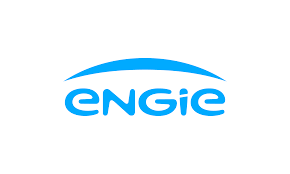
Opinions expressed in AGB blogs are those of the authors and not necessarily those of the institutions that employ them or of AGB.
As the impacts of climate change accelerate, many universities have stepped up to make ambitious pledges around emissions reduction. Some are even setting aggressive timelines for becoming fully carbon free. These commitments often surpass those made by their surrounding communities, reflecting the institutions’ dedication to environmental stewardship and their role as leaders in societal change.
A Healthy Tension
Such noble aspirations are not tangential to a university’s educational mission; they can inspire students and build consciousness of environmental issues into the next generation of leaders. But trustees’ primary responsibility is fiduciary. Their focus is safeguarding the institution’s financial health—the ability to continue fulfilling that educational mission into the future. This means that investments in combating climate change must make financial sense.
Of course, this tension is present in every aspect of university governance. Every dean, department chair, program leader, and athletics director could enhance students’ experience if their budgets were doubled, but limited resources must be allocated where they will have the maximum benefit. Given the existential implications of climate change, how is this fiduciary principle best applied? Here are three principles to consider:
1. Take a holistic view of utilities on campus. Universities typically have dozens or hundreds of buildings in a relatively concentrated area—everything from new construction to structures that have been around for decades or longer. It is easy to think of the different systems that deliver heating, cooling, hot water, and electricity to each building as separate and isolated from one another. But universities that take a step back and look holistically at all campus utilities can more easily identify opportunities to increase efficiency and contribute to climate action goals.
This bird’s-eye view can lead to questions such as:
- How resilient is the whole campus against outages in the electrical grid and other utility disruptions?
- What improvements in the energy efficiency of individual buildings can the university make with minimal capital investment? How do we consume less energy?
- Does the current central plant deliver as much efficiency as it could?
- What are the resources we currently use to generate heating, cooling and electricity? Are there other options?
- What infrastructure will reach the end of its lifespan soonest, and how can highly efficient replacements be identified?
- Can the university extend district heating, cooling, and energy systems to new or existing buildings to boost overall efficiency?
- Are there ways not currently in place to centralize utilities on campus to gain resiliency, efficiency, and flexibility?
- Does the university own property where renewable energy can be generated and/or stored?
Avoiding a piecemeal approach provides the best opportunity to deliver on climate action goals without jeopardizing university finances.
2. Accelerate transformation with public-private partnerships. Universities have competing priorities when they put together capital campaigns, and new buildings may attract donations more readily than utility upgrades. Fortunately, private industry can often provide the capital to implement needed upgrades. On top of that, private industry brings extensive expertise in designing, building, and operating energy infrastructure to the table.
Universities across the United States have entered long-term partnerships with companies that have invested tens of millions of dollars in utility systems, repaid by the institutions through operating expenses at predictable, contracted rates. The private entity often agrees to operate and maintain the infrastructure for a decades-long term, resulting in a transfer of operational risk that trustees will appreciate.
These agreements can be structured to meet the timelines for institutional emissions reduction, with a master plan that increases efficiency and renewable power supply over time. And energy cost savings often offset much of the ongoing operational cost borne by the university. The terms of the agreement are verified by contractual performance guarantees, with penalties assessed to the private company if the metrics are not met.
3. Operate from a perspective of leadership and innovation. To be effective, emissions reduction targets must be more than just a checklist posted on a website—or something that is just the responsibility of one operational team. Rather, the principle of sustainability must be an integral part of the fabric of the university. When an institution views its climate action goals as a part of its academic mission, this can inspire a “whole-of-university” approach to meeting them.
Universities are known for their culture of innovation and collaboration, so researchers, faculty, and students who are inspired to make sustainability a priority can move the ball forward in significant and sometimes unpredictable ways. They can collaborate across disciplines to drive sustainability-focused research initiatives, which can result in cutting-edge solutions to environmental challenges. Harnessing the intellectual capital of its own faculty and students can help an institution advance the frontier of green technology.
The private partners that operate campus energy infrastructure can also contribute industry perspectives and help fund academic chairs, scholarships, internships, and energy-related research projects. And as this research gains visibility, it can attract further philanthropic support from environmentally conscious donors while bolstering the university’s reputation as a leader in the field.
Striking a Balance
As with most fiduciary matters, the pursuit of a zero-carbon campus requires a balanced approach. At first glance, urgent climate action objectives seem to be at odds with the trustees’ priorities of fiscal responsibility. Yet when a university takes a holistic approach and is open-minded about the options to consider, it can accomplish a great deal at a cost it can easily absorb.
Ultimately, the journey toward sustainability requires a collaborative effort that transcends institutional boundaries. By embracing the principles of sustainability as integral to their academic mission, universities can serve as catalysts for positive change in their communities and beyond.
Rocio Vasquez is the director, head of business development for major campuses—energy solutions at ENGIE North America.
With Thanks to AGB Event Sponsor: ENGIE North America



